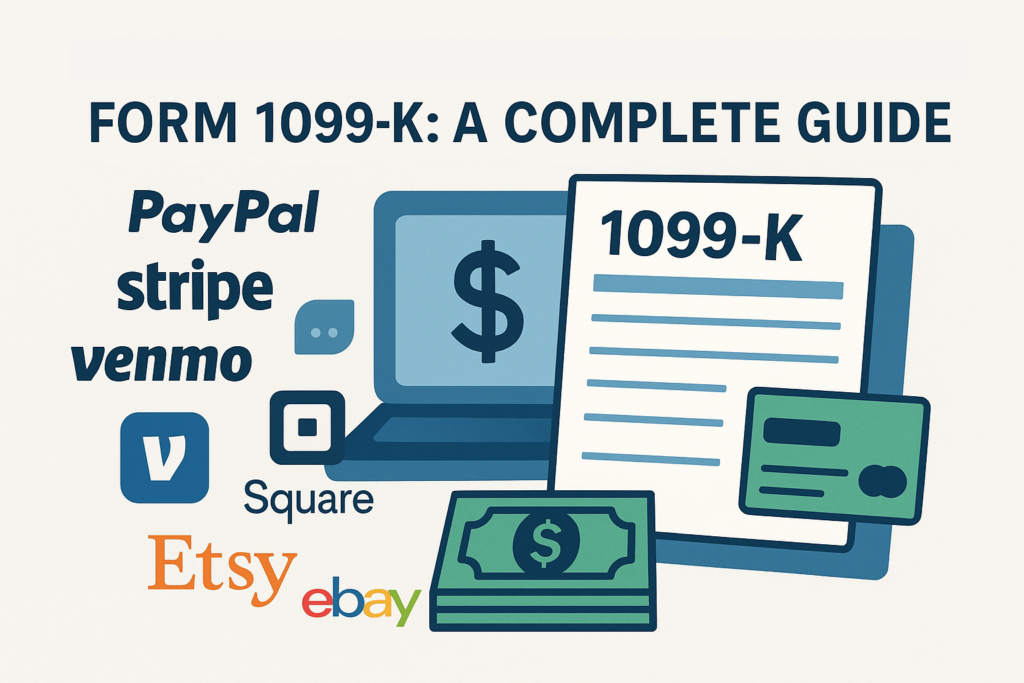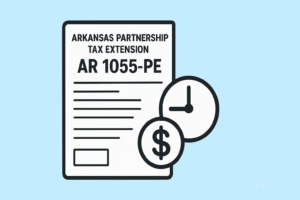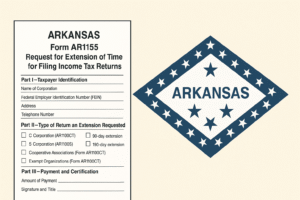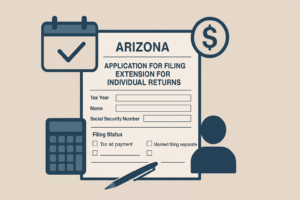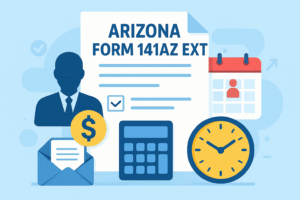In today’s digital economy, payment transactions increasingly flow through third-party processors like PayPal, Stripe, Venmo, Square, and e-commerce platforms like Etsy and eBay. To ensure transparency and proper tax compliance, the IRS requires certain payment settlement entities to report these transactions using Form 1099-K.
If you’re a business owner, gig worker, online seller, or payment processor, understanding Form 1099-K is crucial. This guide walks through everything—from eligibility and thresholds to detailed box-by-box instructions and how to file.
What Is Form 1099-K?
Form 1099-K, Payment Card and Third Party Network Transactions, is an IRS information return used to report certain payment transactions. It’s issued by payment settlement entities (like banks or third-party networks) to report the gross amount of reportable transactions processed for each participating payee (recipient).
These include:
- Payments made via credit/debit cards
- Transactions processed through third-party networks (e.g., PayPal, Stripe, Square)
The IRS uses 1099-K to cross-check reported income. If you’re self-employed or run a business and get paid through electronic means, you may receive this form and need to reconcile it with your tax return.
Who Must File Form 1099-K? (With Examples)
Payment settlement entities (PSEs) are responsible for filing Form 1099-K with the IRS. There are two main types:
- Payment Card Processors – Banks or other entities that handle credit or debit card payments.
- Third-Party Settlement Organizations (TPSOs) – Platforms like PayPal, Etsy, Amazon, Uber, and others that handle payments between buyers and sellers.
Examples:
- Square must file a 1099-K for a bakery that processes $30,000 through card swipes.
- PayPal must file a 1099-K for a freelance graphic designer who receives over $5,000 from 300 different clients.
If you’re a gig worker, Etsy seller, Airbnb host, or eBay merchant, and meet the transaction thresholds, you’ll likely receive a Form 1099-K.
1099-K Reporting Threshold: Year-on-Year and Latest Rules
The IRS has been gradually reducing the reporting threshold for Form 1099-K to improve tax compliance for digital transactions.
Historical & Current Thresholds:
| Tax Year | Threshold |
| 2021 & prior | Over $20,000 AND more than 200 transactions |
| 2022 | IRS delayed $600 threshold implementation |
| 2023 | Still $20,000 and 200 transactions |
| 2024 | Transition year: $5,000 threshold |
| 2025 | $2,500 threshold, any number of transactions |
| 2026 onward* | Expected: $600, regardless of number of transactions |
Note: For the 2025 tax year, Form 1099-K is required if you receive over $2,500 in gross payments via third-party settlement organizations, regardless of the number of transactions.
The IRS has signaled that the $600 threshold will likely be enforced fully from 2026 onward.
1099-K vs 1099-NEC vs 1099-MISC: Key Differences Explained
The IRS uses multiple 1099 forms to track various types of income. While they may appear similar, each serves a distinct purpose based on how the payment was made and the nature of the transaction. Understanding the differences between Form 1099-K, Form 1099-NEC, and Form 1099-MISC is critical to ensure proper tax reporting and avoid duplication or errors.
| Feature | 1099-K | 1099-NEC | 1099-MISC |
| Who files it? | Payment processors / platforms | Businesses / clients | Businesses / organizations |
| Recipient type | Sellers, gig workers, contractors | Independent contractors, freelancers | Landlords, prize winners, attorneys, etc. |
| Payment method | Credit/debit cards, PayPal, Venmo, etc. | Checks, direct deposit, cash | Any (except services already covered under NEC) |
| Minimum threshold | $2,500 (2025) | $600 | $600 (varies by box) |
| Examples | Uber driver paid via Stripe | Writer paid by ACH for freelance work | Attorney paid for legal settlement |
Important Considerations
- You should not receive both a 1099-K and 1099-NEC for the same payment.
For example, if a client pays you through PayPal, PayPal should issue a 1099-K—not the client issuing a 1099-NEC. - If you sell personal items at a loss (e.g., used couch on eBay), you may still receive a 1099-K, but you’re not required to report taxable income—as long as you can show no gain.
- Form W-9 is typically requested in all three scenarios to collect the recipient’s TIN.
When Is the Deadline to File Form 1099-K?
| Action | Due Date |
| Furnish copy to recipient | January 31 |
| File with IRS (Paper) | February 28 |
| File with IRS (Electronic) | March 31 |
Late filing can trigger penalties (explained below). Extension is possible using Form 8809.
Information Required to Complete Form 1099-K
To accurately complete Form 1099-K, the PSE must collect:
- Recipient’s legal name
- Taxpayer Identification Number (TIN) – typically collected using Form W-9
- Gross payment amount
- Number of payment transactions
- Monthly payment breakdown
- Merchant category code (MCC)
- Federal and state tax withheld (if any)
How to Complete Form 1099-K (Box-by-Box Explanation)
Here’s a detailed walkthrough of each box on the 2025 Form 1099-K:
Box 1a – Gross payment card/third-party network transactions
Total gross amount of all reportable transactions, before fees, returns, or adjustments.
Box 1b – Card not present transactions
Subset of Box 1a; transactions processed without the physical card (e.g., online sales).
Box 2 – Merchant category code (MCC)
Four-digit code that describes the business type, like 5812 for restaurants.
Box 3 – Number of payment transactions
The count of transactions processed (e.g., 250 separate customer payments).
Box 4 – Federal income tax withheld
If backup withholding applies (e.g., recipient failed to provide TIN), it’s reported here.
Box 5a–l – Monthly gross transaction amounts
Breaks down the gross amounts (Box 1a) by each calendar month, aiding year-round reporting accuracy.
Box 6 – State
The abbreviation of the state for state-level tax reporting.
Box 7 – State identification number
Recipient’s state taxpayer ID if required by the specific state’s tax authority.
Box 8 – State income tax withheld
If state withholding applies, it’s reported here.
How to File Form 1099-K
Filing Methods:
- Electronic filing (preferred) – Through FIRE System or IRS’ new Information Returns Intake System (IRIS)
- Paper filing – For fewer than 10 returns. Use Form 1096 as a cover sheet.
Copy Distribution:
- Copy A – IRS
- Copy B – Recipient
- Copy C – Payer’s records
- Copy 1 and 2 – For state tax authorities and recipient’s state tax return (if applicable)
Who Is Exempt from Filing 1099-K?
Not everyone is subject to Form 1099-K reporting.
Exempt parties include:
- Individuals receiving personal payments (e.g., gifts via Venmo, not business-related)
- Non-profits receiving donations (with proper documentation)
- Foreign persons not conducting U.S. trade or business
- Entities processing transactions below the threshold
What Are the Penalties for Not Filing Form 1099-K?
Failing to file or furnish Form 1099-K accurately and timely can result in:
| Type of Failure | Penalty per Form |
| Filed within 30 days late | $60 |
| Filed after 30 days but by Aug 1 | $120 |
| Filed after Aug 1 or not at all | $310 |
| Intentional disregard | $630+ (no limit) |
Penalties apply separately for failure to file with IRS and furnish recipient copy.
How to Extend 1099-K Deadline
You can request a 30-day extension using:
- Form 8809 – Application for Extension of Time to File Information Returns
- Must be submitted by the original due date
- Extensions are automatic for filing with IRS but not for furnishing recipient copies (must request separately with justification)
What Should Recipients Do with Form 1099-K?
If you receive a 1099-K:
- Review carefully for accuracy (name, TIN, amounts)
- Compare with your own transaction records
- Report income on your tax return, even if it seems overstated (e.g., includes fees or refunds)
- Dispute incorrect forms promptly with the issuer
Note: The IRS receives a copy, so ignoring it could trigger an audit.
Final Thoughts
Form 1099-K is more than a document—it’s a reflection of your business’s electronic footprint. As thresholds lower and enforcement tightens, understanding how to read, file, and respond to 1099-Ks is crucial for tax compliance and avoiding costly penalties.
Whether you’re a payment processor, online seller, or gig worker, staying proactive with 1099-Ks ensures your tax filings align with IRS expectations.

